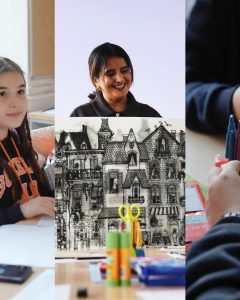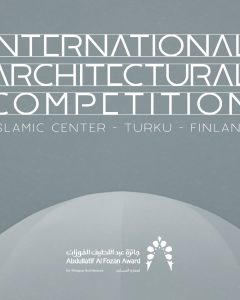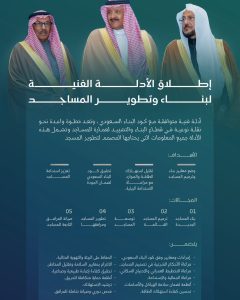When I focused, in the two previous articles, on the idea of breadth and flexibility, to which the Prophet (PBUH) referred, “The earth has been made for me (and for my followers) a place for praying and a thing to perform purification with”.Dr. Mohammed Al-Hussain draws my attention that there is another important and influential dimension connected to this Hadith, which makes the prayer and mosque a very different and influential dimension at the level of human culture. Certainly, this influence extends deeply to the Architecture of “Future Mosques”. This may contribute to defining its features and directions.
The fact that the earth is a place to pray, allows every Muslim to practice prayer at any time in any place. This may be heard and seen by people in the world, in land, sea and air, in mosque, street, school and factory. This is supported by the fact that the prayer is collective and individual. Although collective prayer is better by twenty-seven degrees, which makes the mosque a building of importance and attendance. But this high flexibility in performing prayer means first: its utmost importance, and secondly it is linked to specific times “Indeed, prayer has been decreed upon the believers a decree of specified times”. This requires that the prayer be performed everywhere individually and collectively.
The mosque, in its mobile functional sense, is a declaration of Islam. It is rare to happen in any other religion to move the place of worship with humans wherever they are. Perhaps here we stop at this important aspect reflected by the mosque and is supposed to be reflected in its architecture. So, we shall discuss this high flexibility represented by the mosque as a building and a place to pray. I think that we shall bear this in mind when studying the history of mosque architecture. We shall learn from those who preceded us how they were able to deal with this flexibility and these important principles, which undoubtedly contributed to access the character of the mosque as we know now.
Perhaps the important the principle of “worship in public” is that the mosque itself is a social gathering. Prayer gathers people, defines the circle of the neighborhood or district and defines its inhabitants. Therefore, the presence of the place where prayer is practiced is the achievement of this important social goal. This is important because the Prophet (PBUH) built a mosque in Quba and then built his mosque in Madina El Monawara to gather people. So, the mosque would be the center of the new state, but not to pray in a covered, closed, large or small place. This close relationship between the idea of gathering and communication represented by the building of the fixed mosque, which is a “spatial” reference where people return to and “clarity” or to be visible and watched while you are praying in which there are many visual and spatial relations that should be considered.
The principle of spatial breadth and freedom is fully compatible with “being visible” while you are praying. This deep relationship emphasizes the importance of openness and transparency of the mosque building. This is a controversial issue because some believe that this openness and transparency may distract the worshiper from prayer. While the building of the mosque should be in an open place and not completely closed. It can just be a ceiling without walls if this ceiling leads to protection from weather conditions. The question here is: Is it forbidden to develop the architecture of mosques in order to see worshipers performing their prayers? Will this affect their “reverence”? Is reverence supposed to be in closed and small places? These questions are in fact the area of research in the architectural component of future mosques.
How can the building of the mosque become a reference to the concept of simple Islam open to the other? There are no secrets in worship. It is assumed that the building of the mosque reflects this deep understanding in worship and in the message of Islam. Therefore, there are no secrets in the building of the mosque. Being visible while praying may be a direct challenge to the physical boundaries usually made by architecture. Although the history of the building of mosque over the last fourteen centuries witnessed multiple attempts to free itself from those non-binding boundaries to build the mosque in a closed manner. However, the current time with its sophisticated technologies can allow the application of such ideas.





